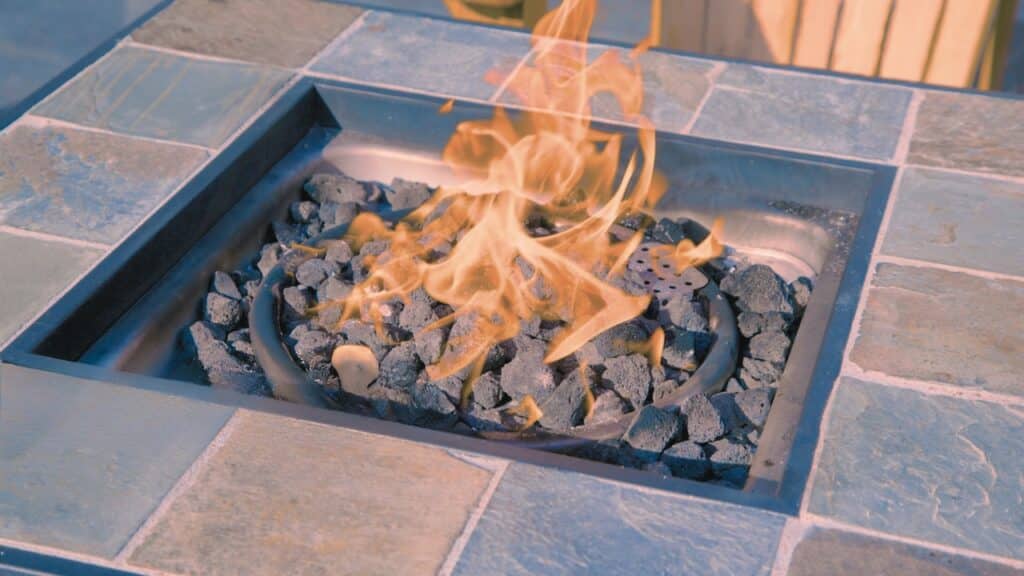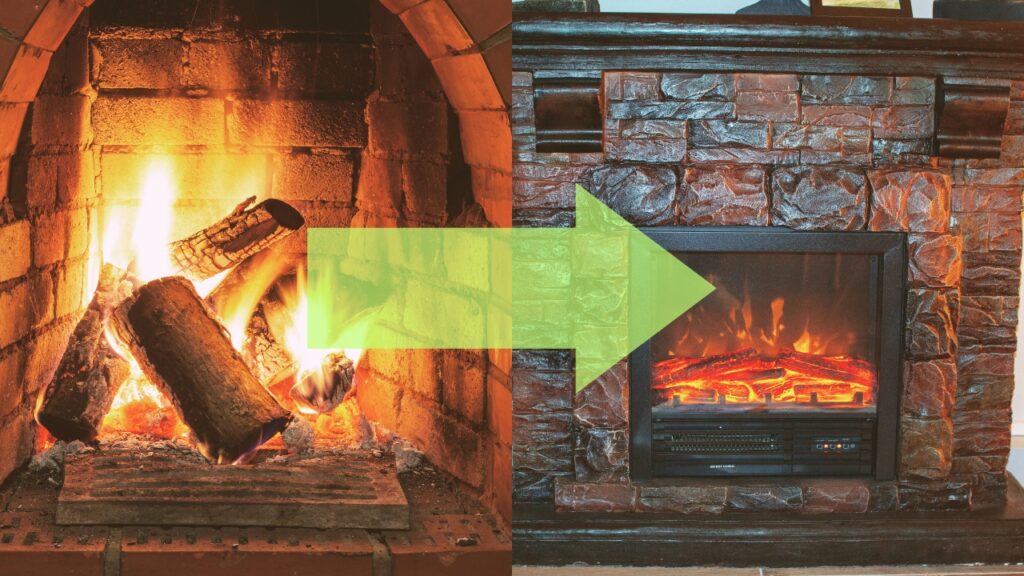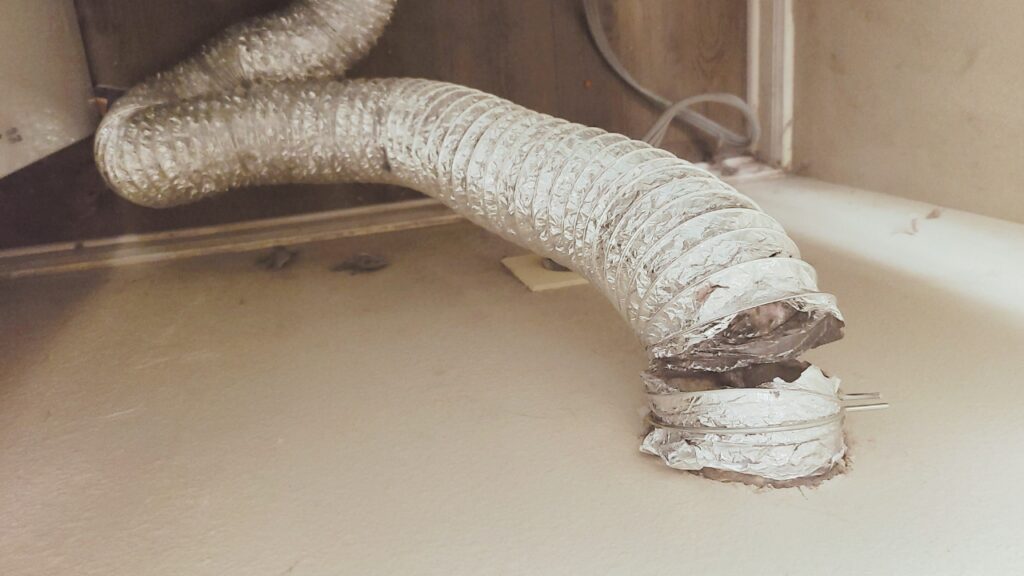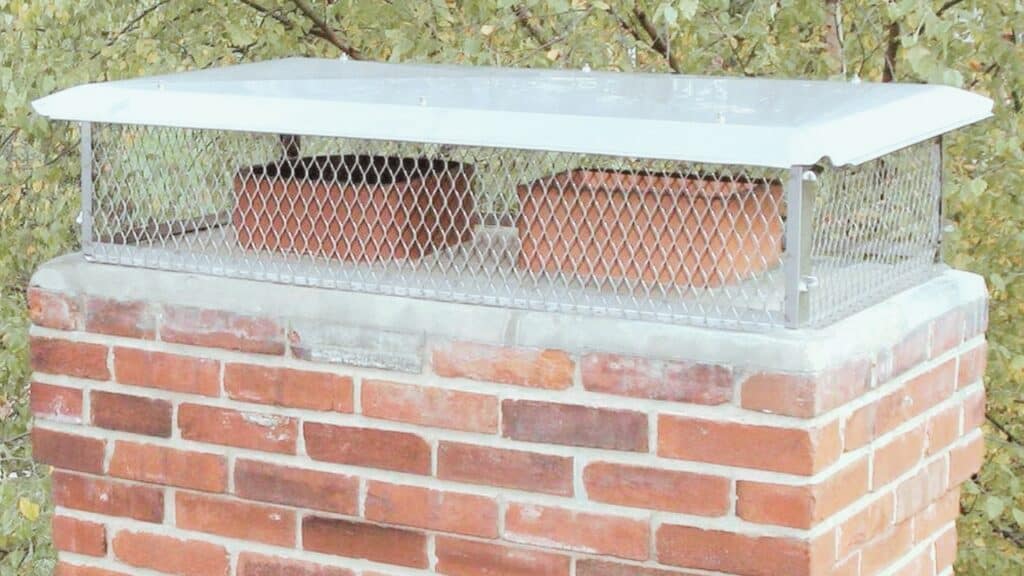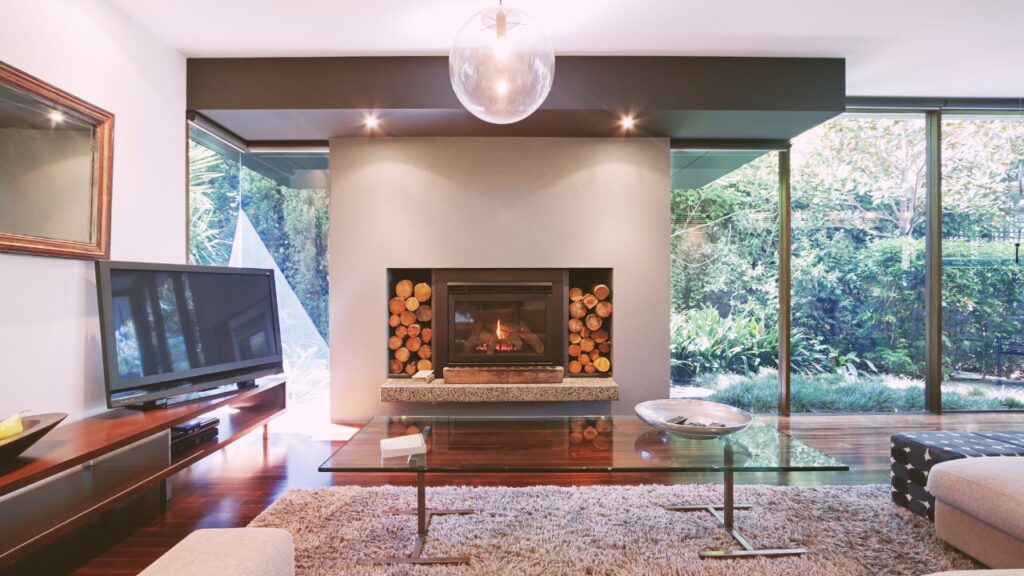Routine maintenance of your chimney is important for keeping it efficient and safe. That is why knowing about level 2 chimney inspection and when it is needed is important.
In this level of inspection, a certified chimney professional visually inspects your chimney’s internal and external parts. Special video scan technology is used to detect faults and issues in parts that are difficult to reach.
Level 2 inspection is needed after making major changes in your chimney system, during the sale or purchase of a house, or if your chimney was damaged due to earthquakes or any other major event. Only certified chimney sweeps can perform this service properly.
In this article, we’ll answer your questions about level 2 chimney inspection.
So let’s jump right in.
What Is a Level 2 Chimney Inspection?
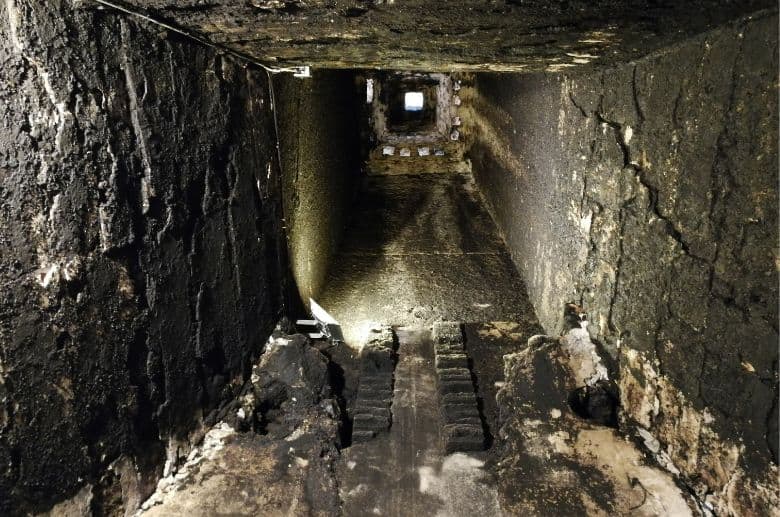
In a level 2 inspection, a certified fireplace inspector performs a detailed inspection of your fireplace and chimney. The technician visually inspects your chimney to find damaged or faulty parts and suggests the best possible solutions.
The chimney sweep uses video scan technology to inspect spots inside the chimney that are otherwise hard to reach.
It is best to perform a level 2 chimney inspection before repairing any part of your chimney. There’s a chance that the problem you are facing is not caused by the part you are repairing but by another element; for instance, you might think the problem is with cracks in the structure when it’s actually a corrosion issue.
If you have your chimney inspected first, you will find out exactly what is wrong with your chimney. You can fix those problems, saving you a lot in repairs and keeping your family safe from dangerous situations.
When Is a Level 2 Chimney Inspection Required?
A level 2 chimney inspection is mandatory in the following situations:
Change in the System
If your chimney undergoes a major change, you must get a level 2 inspection.
A change may include installing or replacing a chimney part of a different capacity or efficiency. Getting your old chimney flue replaced with a different type or dimension of flue is an example of a major change.
If your wood-burning flue is changed to a gas chimney flue, you’ll need a level 2 chimney inspection. The same applies when you replace a clay liner with a stainless steel liner.
After a major change in your chimney system, there’s a chance that some problems may linger. If we take the previous example, there’s a chance that the new flue is not installed properly. It is also possible that the flue type is not right for your chimney system.
Inspecting your chimney ensures that everything is alright and your chimney system can work safely and efficiently with the new addition.
Change in Ownership
Buying a house is a major investment. You want to make sure that everything in your house is perfect. People are usually more concerned about the house’s walls, windows, fences, and other aspects but forget the chimney.
When buying a house, inspecting its chimney for any underlying issues is important.
Sometimes the house you want to purchase has a faulty chimney. The chimney might be leaning, or the chimney flue (liner) might be cracked. These issues (and several more) are common and can cost a lot to repair. More importantly, purchasing a home without having the chimney inspected is a health and safety risk.
In some states, getting a level 2 chimney inspection of your chimney is a requirement when selling or purchasing a new property.
——
Do You Need to Hire Chimney & Fireplace Expert?
Get free quotes from qualified experts near you. No commitment required!
——
Chimney Malfunction or Damage
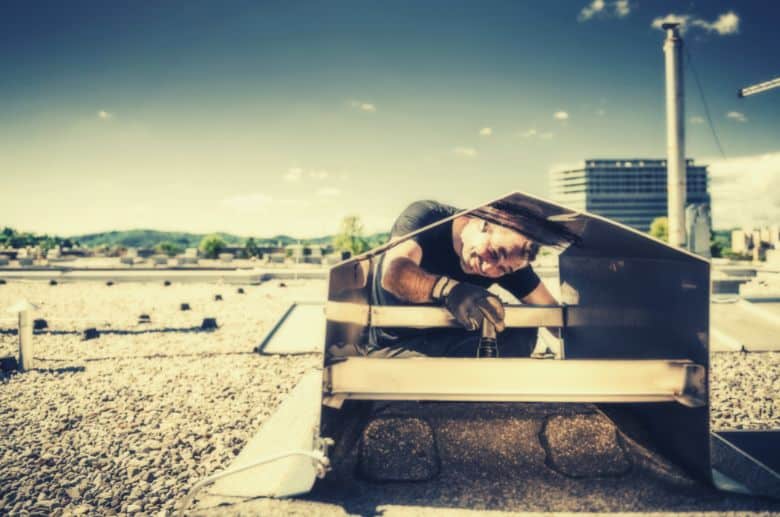
You need a chimney inspection if your chimney has malfunctioned. For example, it used to be drawing the smoke outside or working more efficiently.
If there has been a chimney fire, get a professional chimney sweep to get to the root cause of the problem. You also want to see any damage the chimney fire might have caused. For example, it is common for chimney fires to crack your chimney flue. You can’t see this on your own; only a professional company with the proper tools can spot the problems.
A level 2 chimney inspection is also needed in case of damage by lightning strikes, a thunderstorm, or an earthquake. These events can cause serious damage to your chimney parts. For example, an earthquake can crack your chimney flue, increasing the chances of a chimney fire and leaking dangerous gases into your home.
Lighting a fire in such situations can put your family in danger. So get your chimney inspected by a professional after such events to fix any serious issues and ensure that your chimney is safe to use.
What Is Included in a Level 2 Chimney Inspection?
Here is what is included in a level 2 chimney inspection:
Visual Inspection
Chimney experts do a video scan of the internal parts of your chimney that are hard to reach. For example, the joints of your chimney flue are inspected. The chimney experts will also make sure that the dimensions of various chimney parts, such as the venting system, fireplace opening, chimney flue, and the size of the fireplace throat, all adhere to the standards set by NFPA 211.
Clearances of accessible portions of your chimney and fireplace (that do not need destruction or removal of parts of your chimney or house) are also inspected.
All chimney and fireplace clearances are checked during the inspection to ensure they meet the NFPA 211 standard. The standard states:
“Any chimney part on the inside of the chimney or near the outside wall of your home or building should have at least 2″ of airspace from a combustible.”
Detailed Report
After the inspection, the certified chimney experts will provide a detailed report. It will include images and videos to show the current condition of your chimney. The chimney expert will clearly explain what might be wrong with your chimney and discuss the best possible solutions.
You will also get a final quote (this can take up to 24 hours) of the required fixes, after which you can schedule an appointment.
Level 2 Chimney Inspection Checklist
It is important to know that the chimney sweep you hired does the inspection accurately. Therefore, you must know what to expect from a level 2 chimney inspection.
Here’s a checklist to help you out:
| Level 2 Chimney Inspection Checklist | |
| * Chimney wall material | * Attic insulation shield for factory-built chimneys and fireplaces |
| * Condition of chimney walls | * Housing and shrouds for factory-built chimneys and fireplaces |
| * Support type of factory-built chimneys | * Appropriate assembly of parts of factory-built chimney and fireplace |
* Clearances of factory-built chimney and fireplace | * Attachment to appliance |
* Venting system dimensions | * Chimney flue dimensions |
* Proper installation and condition of chimney flue offsets | * Proper sealing of non-functioning chimney flue openings |
* Wash construction | * Expansion joint between chimney flue and wash |
* Condition of chimney flashing | * Crickets and ash dump |
| * Thickness of chimney connector or vent connector gauge | * Proper dimensions of chimney and vent connector diameter in accordance with connected appliances |
* Proper installation and clearances of the wall pass-through | * Proper dimensions of chimney or vent connector in accordance with vent or chimney |
* Manifold dimensions | * Combustion air supplied for fireplaces |
* Outside air inlets, outlets, and ducting | * Hearth extension of masonry fireplaces |
* Fireplace opening size | * Proper dimensions of the throat of masonry fireplaces |
* Proper installation and clearance of the wall pass-through | * Smoke chamber lining |
* Smoke shelf | * Fireplace brand, model, and listing |
* Approval of glass doors and accessories of fireplaces | * Hearth platform and covering of factory-built fireplace |
How Long Does a Level 2 Chimney Inspection Take?
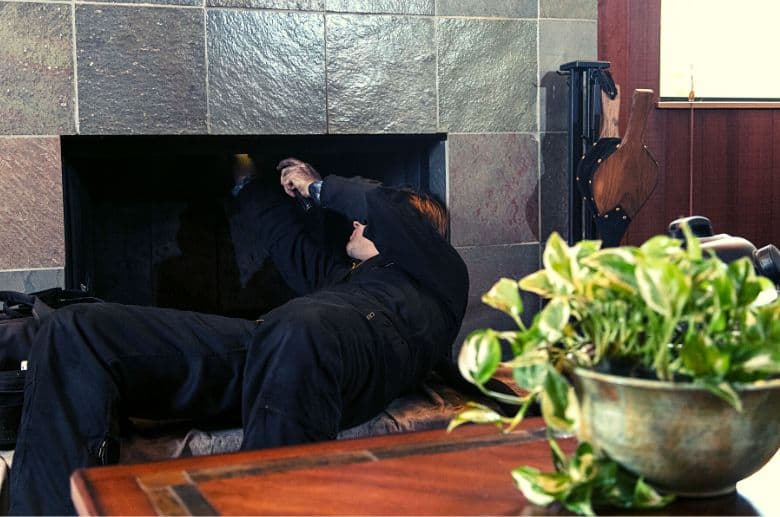
A level 2 inspection could take anywhere from 1 to 2 hours, depending upon the size and style of your chimney. If your chimney has not been maintained or cleaned in a long while, there could be soot and creosote obstructions. These obstructions need cleaning to thoroughly inspect a chimney, thus increasing the total inspection time.
Your chimney expert will need an extra 15 to 20 minutes to complete the report. They will explain the condition of your chimney and the required fixes.Make sure you schedule out time for the chimney inspection to avoid any clash in your schedule and the appointment time.
——
Do You Need to Hire Chimney & Fireplace Expert?
Get free quotes from qualified experts near you. No commitment required!
——
Level 2 Chimney Inspection Cost
The cost of a level 2 inspection can vary based on your locality and the cost of living. Other factors that influence the chimney inspection cost include:
- the condition of your chimney
- how frequently you use your chimney
- how dirty your chimney is
- the time of your last inspection
Here’s a table of the estimated cost of a level 2 inspection of chimneys with different numbers of flues:
| Number of Chimney Flues | Average Chimney Inspection Cost (Low) | Average Chimney Inspection Cost (High) |
| 1 | $200 | $500 |
| 2 | $400 | $800 |
| 3 | $650 | $900 |
| 4 | $750 | $1100 |
The Takeaway
The level 2 chimney inspection is a thorough inspection of the interior and exterior of your chimney. This includes using a video scan to reach parts of the chimney that are difficult to inspect.
You should get a level 2 inspection of your chimney by a certified chimney expert if:
- Your chimney undergoes any major change
- A chimney fire occurred
- Your chimney was damaged by a lightning strike, earthquake, etc.
- You plan on purchasing or selling a house
Whatever the reason may be, chimney inspections are important. They ensure that your chimney is working efficiently and is safe to use. Through chimney inspections, you can detect various underlying problems. You can then fix them before they cause too much damage and danger. This will also save you thousands of dollars in repairs.
Frequently Asked Questions (FAQs)
Here are some common FAQs for homeowners are:
How many levels of inspection does the NFPA 211 detail?
There are three levels of chimney inspection:
Level 1 chimney inspection includes a visual inspection of the interior and exterior of your fireplace and chimney. This should be conducted at least once yearly, even if there aren’t any issues.
Level 2 inspection includes everything in a level 1 inspection. Also, it includes various chimney clearances and inspection of parts of the chimney that are difficult to inspect in a level 1 inspection.
Level 3 inspection includes everything in a level 2 inspection and the destruction and reconstruction of part/s of your chimney or house. It is done to reach the inaccessible portions to solve a serious chimney problem.
What is the difference between level 1 and level 2 chimney inspection?
A level 1 chimney inspection includes the evaluation of the interior and exterior of your fireplace and chimney. A level 2 inspection includes everything covered in a level 1 inspection but is more thorough. It uses video scan technology to check parts of the chimney that are difficult to reach. It also includes checking various chimney clearances.


